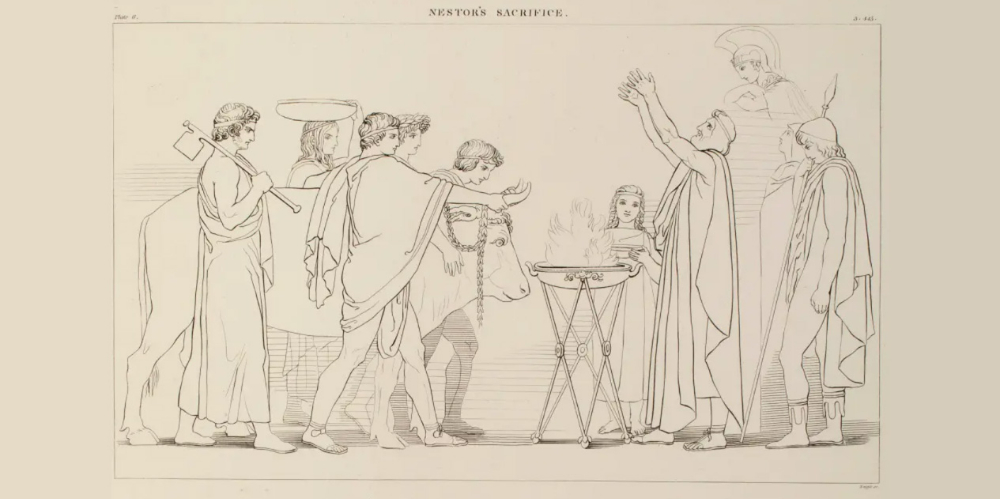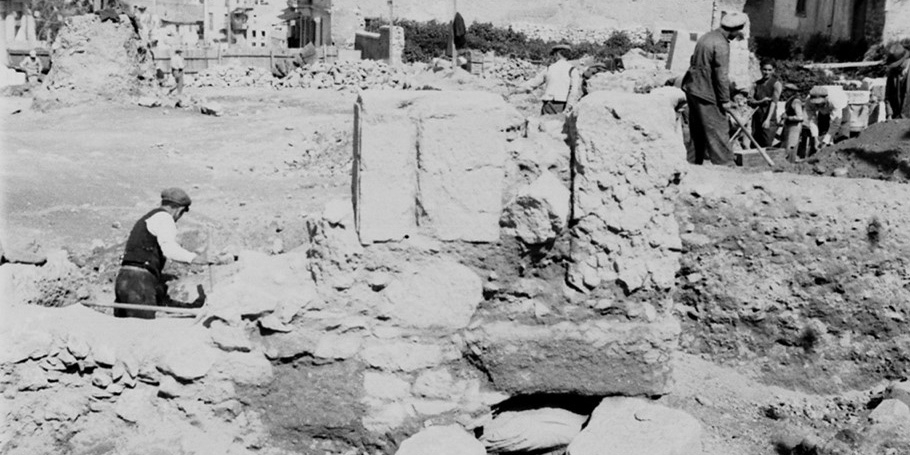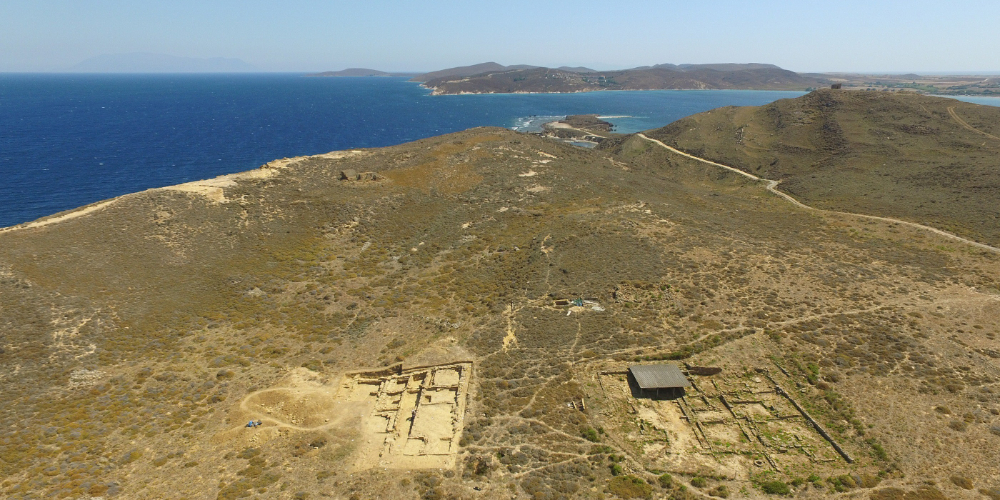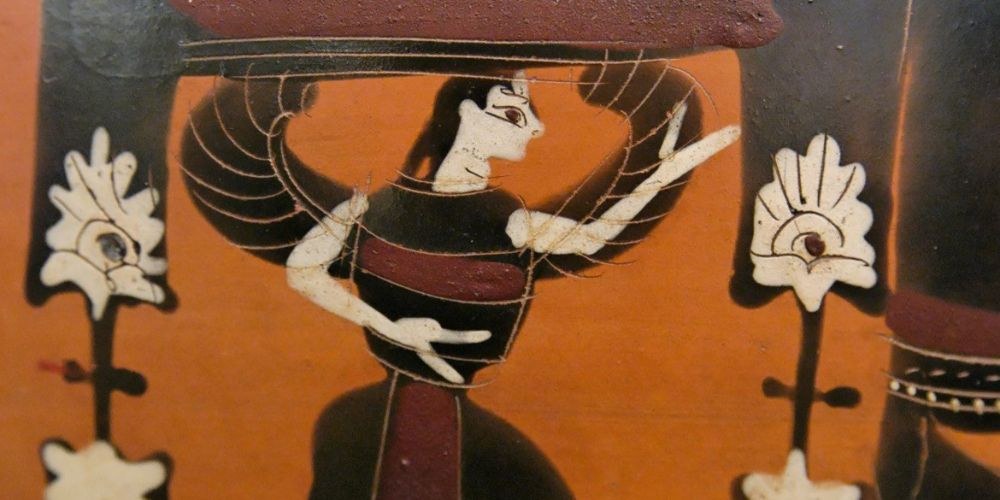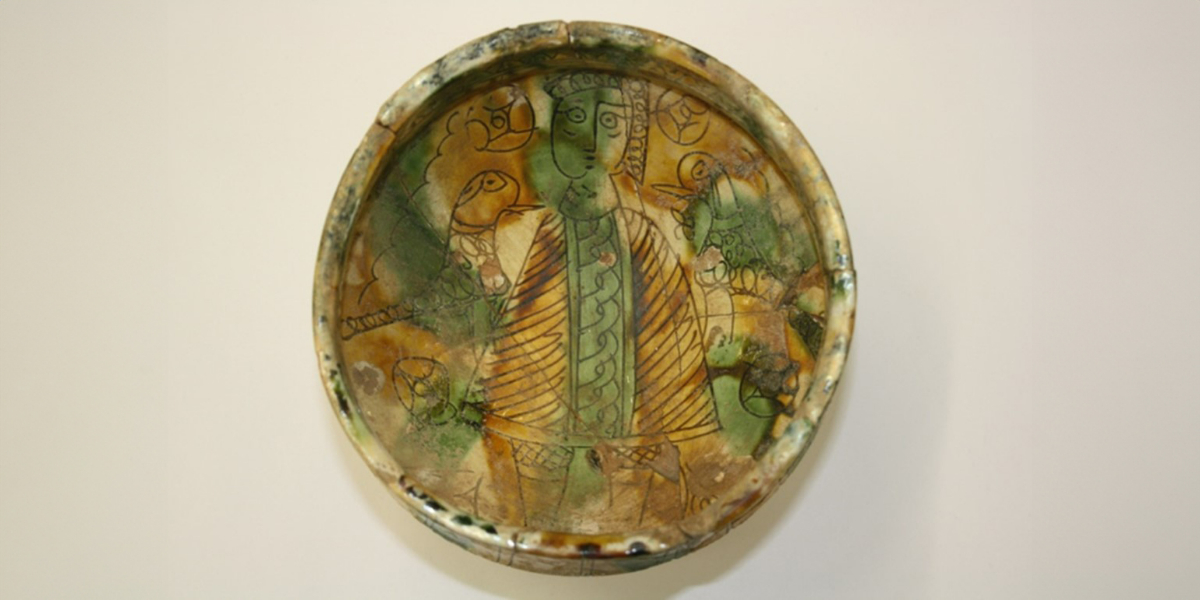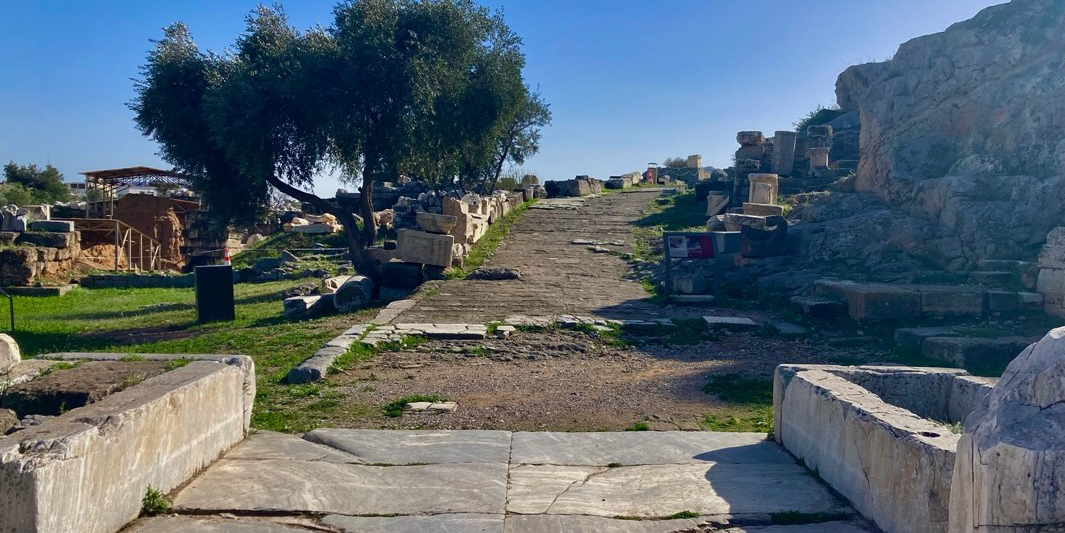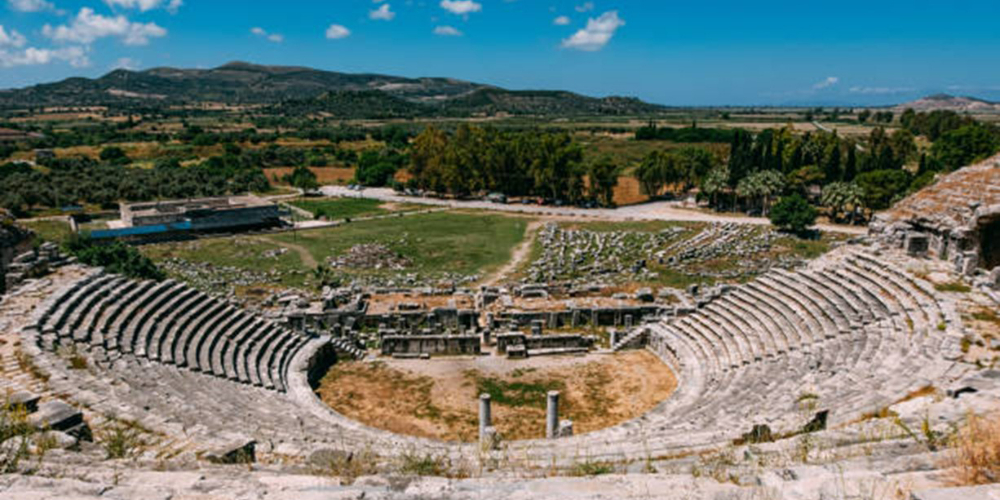Distant Deities, Central Places. Reconsidering the “Extra-urban” sanctuary
International conference
Publicerad: 2023-03-29
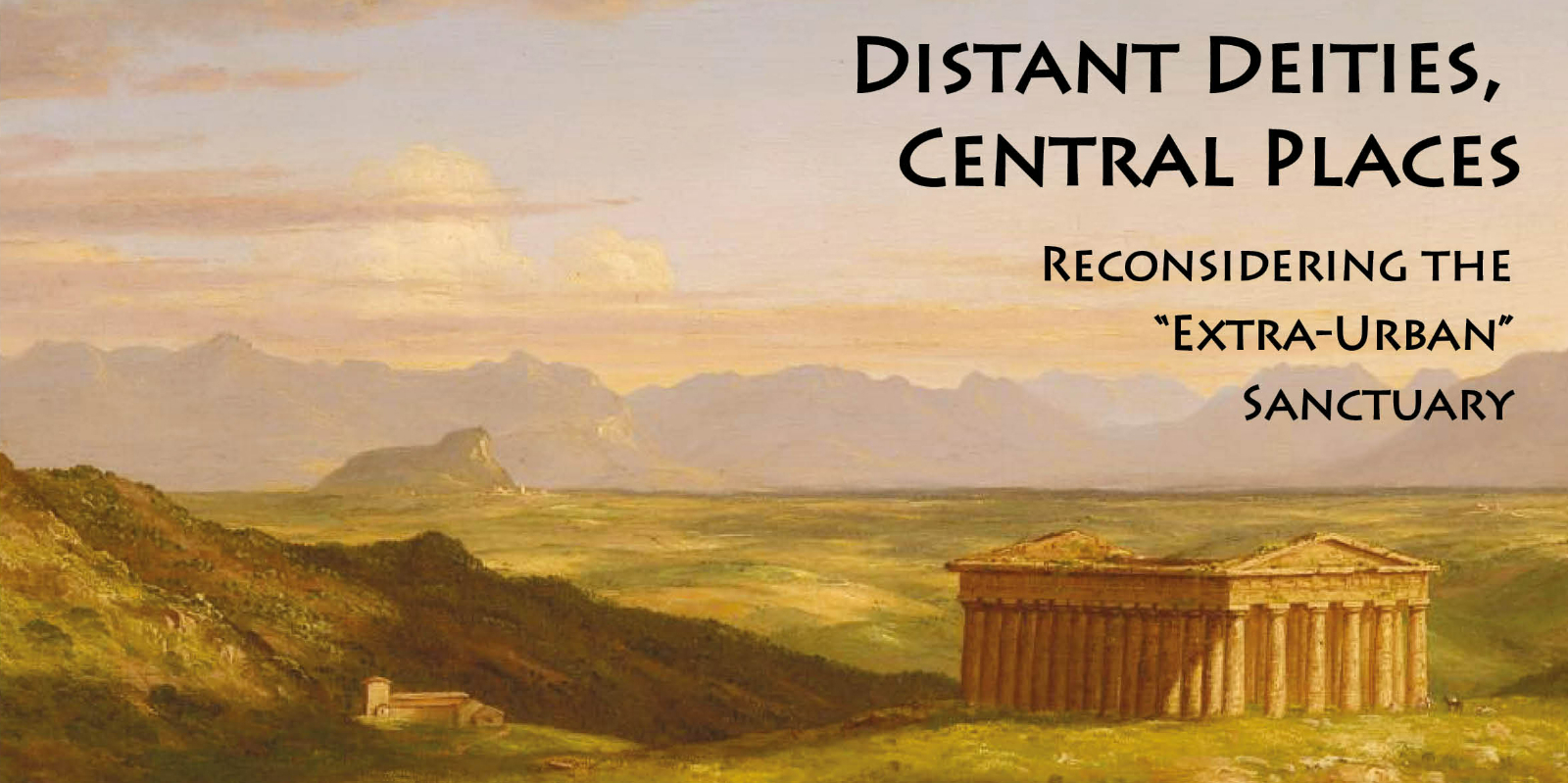
The conference will take place as a hybrid event, Thursday, April 6 – Saturday, April 8, 2023, physically in the lecture hall of the Italian Archaeological School at Athens, Parthenonos 14, and digitally on Zoom. Please register at conferences.sia.gr for participation.
For further information, contact distantdeities@gmail.com or admin@conferences.sia.gr.
__________
Organizers:
- Axel Frejman, Uppsala University
- Christina Williamson, Groningen University
- Floris van den Eijnde, Utrecht University
__________
Abstract
Sanctuaries located at a distance from major centres of population in the ancient world are conveniently labelled by scholars as ‘extra-urban’. Most scholars have an idea as to what kind of sanctuary this indicates. But how accurate is this image? How has the designation of ‘extra-urban’ steered our thinking about these special places of cult? What implications does the term bring with it, and what other dynamics might be left out of the picture? By reconsidering our terminology, this conference aims to realign our thinking about these places of cults, and our positioning of them in the divine and human landscape.
Background
Major sanctuaries beyond the confines of the urban centre have long attracted the attention of scholars. Early studies keenly observed their role in articulating the natural and human landscape (Semple 1927, Stillwell 1954, Lehmann 1954, Scully 1962). Towards the later part of the twentieth century, they have been drawn into the ‘spatial turn’ of archaeology in a focus on the urban-rural axis of the ancient (Greek) city, in an effort to include the countryside as a constitutional factor in the conceptualization of the polis. Combined with Christaller’s Central Place Theory, this led to a strong core-periphery conceptualization of ancient Greek societies, with the town (asty) as starting point, and concentric zones radiating out into its territory (chora). Rural sanctuaries that were once considered remote or isolated in the landscape are now generally seen in the context of the chora, i.e. still within the sphere of urban space, but at points near or far from the nucleus, and classified accordingly. Terms such as ‘intramural’, ‘extra-mural’, ‘sub-urban’, ‘extra-urban’, ‘inter-urban’ and even the negation ‘non-urban’ (de Polignac 1995) all reference an urban context and imply a direct correspondence between the sanctuary and the political centre to which the wider territory belonged (Vallet 1968 (Magna Graecia), Edlund-Berry 1988 (Etruria), Schachter 1992 (Boiotia)). Mythology and ritual practices bound these sacred places to the urban centre and central powers (e.g. Sourvinou-Inwood 1990; 2000).
A special place in scholarship is reserved for monumental shrines near the edges of territory and particularly political borders. François de Polignac’s seminal work La naissance de la cité grecque (1984/1995) presented the ‘bi-polar model’, in which a major ‘extra-urban’ sanctuary at the periphery of territory serves as counterweight to the urban core and the development of the ancient city. This drew attention to the ‘frontier’ role of ‘extra-urban’ sanctuaries, so much so that the two qualifiers are often interchanged. De Polignac’s work is certainly inspirational (e.g. contributions in Alcock & Osborne 1994, also Graf 1996, Sinn 1996, Malkin 1996, Cole 2004), but it is also problematic, with criticism aimed among others on its reliance on the core-periphery model and assumption of a meaningful urban-rural bias in antiquity (Hall 1995, Polinskaya 2006). It is especially the urban bias of the term ‘extra-urban’ that we wish to examine more closely.
More recent studies extend their view well beyond the city, considering these monumental shrines in sacred landscapes (e.g. Käppel and Pothou 2015, Häussler and Chiai 2019, Papantoniou et al. 2019, Collar and Kristensen 2020). They are in many or most cases clearly centres in their own right, often attracting a wide variety of worshipers and serving as council houses, or hubs in networks that are both political, religious, and economic in nature. But even though these sacred places are perceived as established places of authority, often reaching back into deep time, their role in the human world is never static and subject to changing agencies that operate at several different levels simultaneously. The need for a ‘thick description’ that Häussler and Chiai 2019 argue for sacred landscapes is just as prevalent regarding the sanctuaries themselves.
Aims
With this conference, we aim to better understand these monumental sacred places and their relationships to power networks at a variety of scales. Rather than concentrating on a single region or moment in time, we feel that a broad perspective is needed to truly re-evaluate these shrines, and place them in their larger contexts.
Topics may include, but are certainly not limited to:
- Terminology, is Extra-Urban a useful term? When does it work and when is it misleading or imposing a false model?
- Origins in place, why are sanctuaries located where they are, landscape features?
- Ancient understanding, how were sanctuaries distinguished from an emic perspective (e.g. ‘propolis’ sanctuary). How meaningful were urban/rural distinctions in antiquity in relation to sacred places?
- Change, temporality and shifting surroundings, change and development - e.g. sanctuaries becoming urban or becoming rural (e.g. Malkin 1996, some sanctuaries ‘become’ extra-urban over time, or some extra-urban sanctuaries urban.
- Connecting shrines – parallel sanctuaries in and outside of town - e.g. ’doublets’ (Jost 1994; Lykaion/Megalopolis, Brauron/Athens, Eleusis/Athens)
- ‘Panhellenic’ sanctuaries and local political dynamics – how should we balance the magnitude of shrines like Delphi, Olympia, Isthmia, Nemea between their larger catchment area and the local communities that administer them?
- Functions, how do we square various differing functions of sanctuaries, e.g. border sanctuaries (sanctuaries between settlements), religious citizenship (de Polignac), sanctuaries as places of production, but also more utilitarian and ritual needs.
- Integration, how did sanctuaries interact with local and distant societies and settlements, economies and politics. How do we understand temple autonomy, priestly agency and the relationship with local elites?
- Wider perspectives, e.g. eastern temple-states, Bronze Age peak sanctuaries (Crete), Etrurian sanctuaries, Italiote sanctuaries.
- Social and economic impact, how did the sanctuary affect its surroundings, e.g. sacred landscapes, sacred lands, temple lands, but also social rituals.
- Beyond the polis – recent discussions address Greek religious practices beyond the polis (Morgan 2002, Kindt 2012, Constantakopoulou 2015, Eidinow 2020) help us out of the urban / rural dichotomy? Sanctuaries and non-urban powers.


